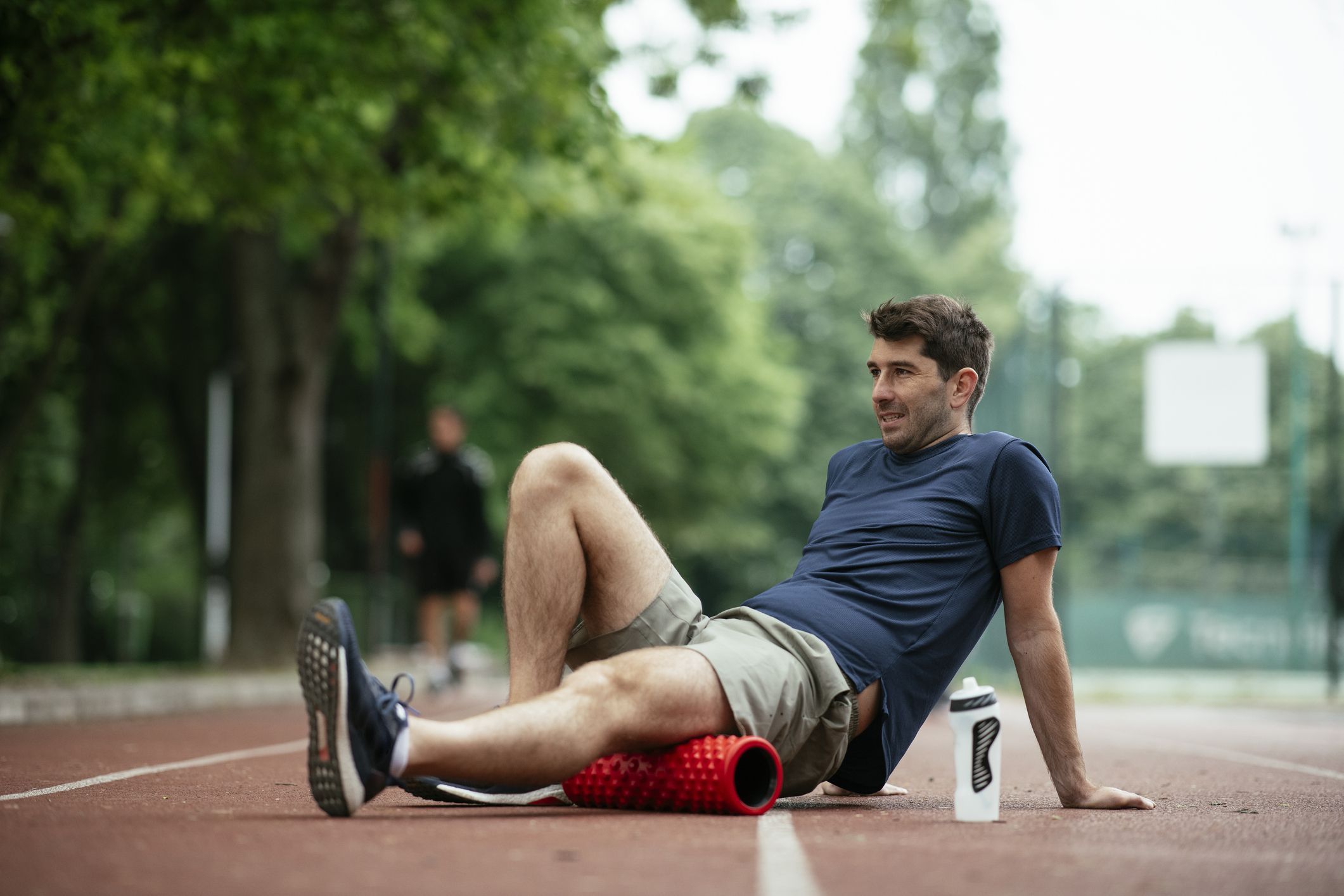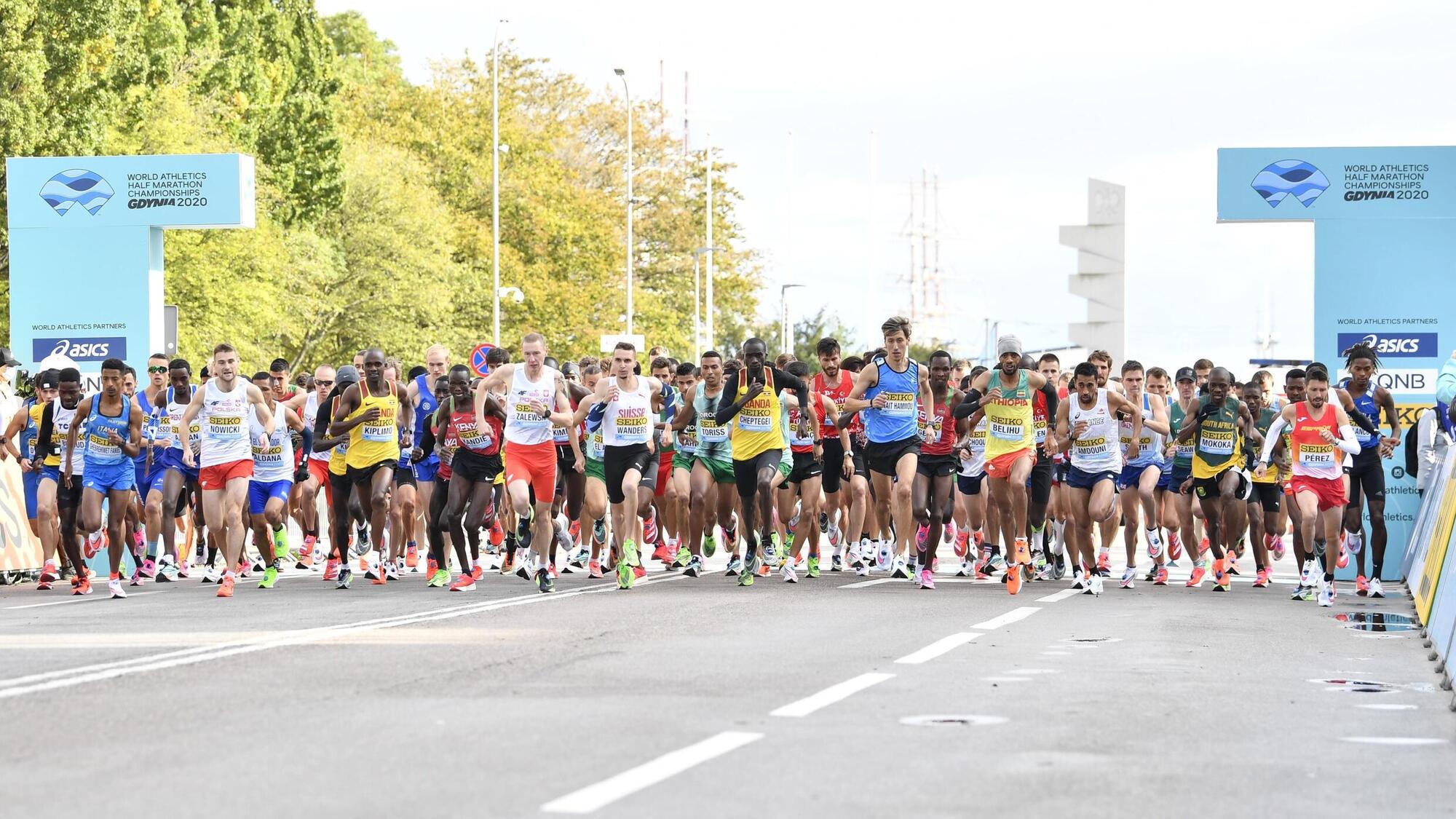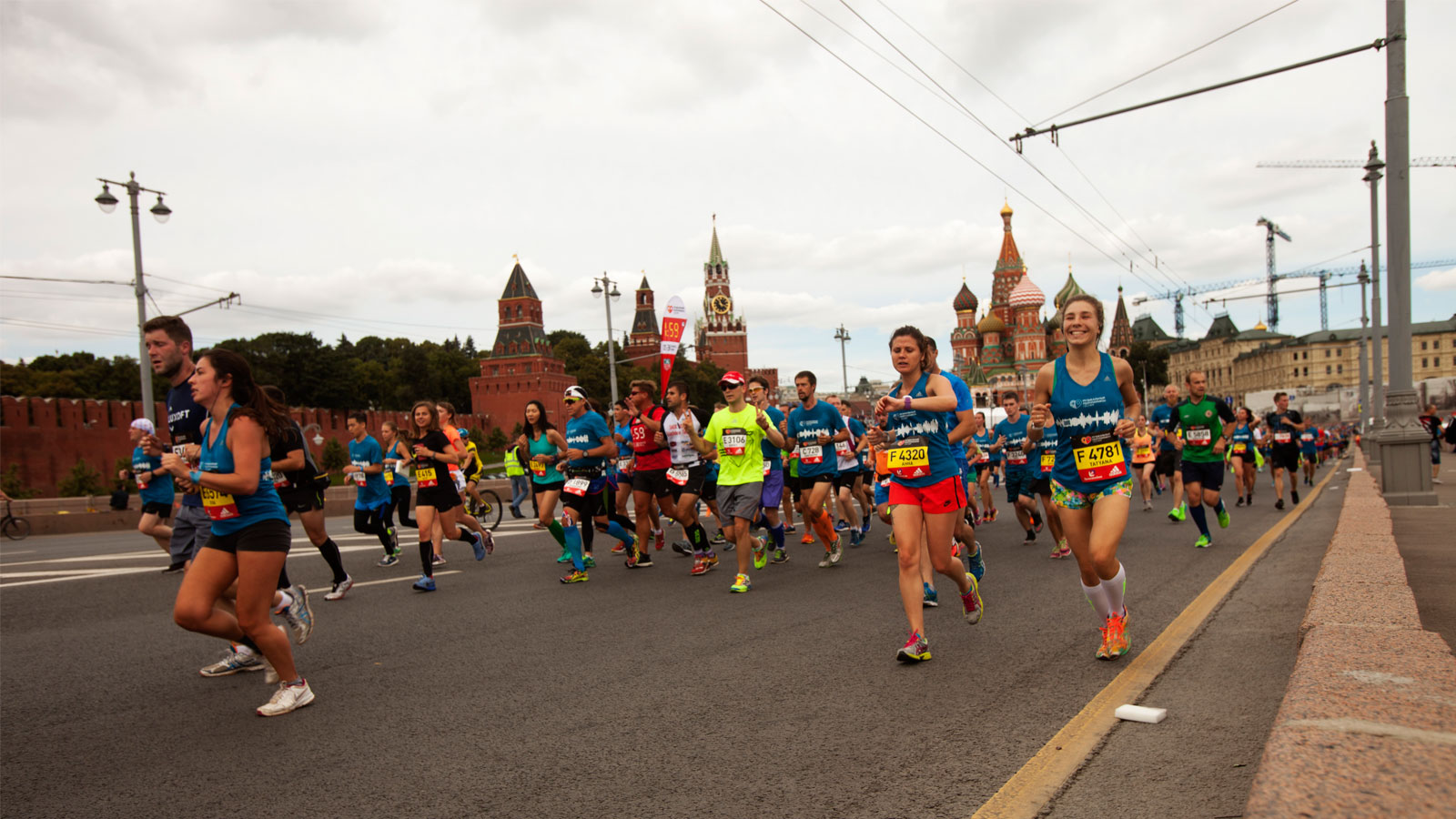

Featured
How Do You Prepare For A Marathon
Modified: January 22, 2024
Get ready to tackle your next marathon with our featured tips and tricks on how to prepare for the race. Start training now for the ultimate challenge!
Introduction
Preparing for a marathon is not just a physical challenge, but also a mental and emotional journey. It requires dedication, perseverance, and a well-structured plan to ensure you are ready to tackle the 26.2-mile race. Whether you are a seasoned runner or a beginner, proper preparation is crucial to help you reach the finish line and achieve your goals.
The journey of preparing for a marathon is not easy. It requires commitment and a strong mindset to push through the physical and mental barriers that may arise during training. However, with the right guidance and preparation, you can conquer any challenges that come your way.
In this comprehensive guide, we will walk you through the essential steps to help you prepare for a marathon successfully. From setting your goals to building endurance, from nutrition and hydration to mental preparation, we will cover all the crucial aspects of marathon training. By following these steps, you will not only improve your physical fitness but also develop the mental toughness needed to stay focused and determined on race day.
It’s important to remember that every individual is unique, and there is no one-size-fits-all approach to marathon preparation. What works for one person may not work for another. Therefore, it’s essential to tailor your training plan and strategies based on your own abilities, limitations, and goals.
So, whether you dream of completing your first marathon or are looking to set a new personal record, let’s dive into the various elements of marathon preparation that will set you up for success. The journey will be challenging, but the sense of accomplishment and the experience of crossing that finish line will be absolutely worth it.
Setting Your Goals
Before embarking on your marathon journey, it’s important to start by setting clear and realistic goals. Your goals will not only give you a sense of direction but also provide motivation and a benchmark to measure your progress along the way.
There are a few key considerations when setting your marathon goals. First, determine the primary objective of your race. Is it to simply finish the race, or do you have a specific time goal in mind? Understanding your main objective will help shape your training plan and guide your decision-making throughout the process.
Next, take into account your current fitness level and running experience. If you are a beginner, it’s advisable to set more conservative goals for your first marathon and focus on completing the race comfortably. On the other hand, if you have prior running experience, you may aim for a faster finishing time or even qualify for a prestigious marathon event.
Consider the time you have available for training. The more time you can dedicate to training, the more ambitious your goals can be. However, be realistic about your schedule and commitments to avoid setting goals that are too demanding and may lead to burnout or injury.
Once you have identified your primary goal, break it down into smaller milestones. This will help you track your progress during training and provide a sense of accomplishment as you achieve each milestone. For example, if your goal is to finish the marathon in under four hours, you can set milestones such as running a certain distance at a specific pace in training.
It’s important to remember that goals are not set in stone. As you progress in your training, you may reassess and adjust your goals based on your performance and how your body responds to the training load. Flexibility is key to avoiding disappointment or frustration if your initial goals need to be modified along the way.
Setting goals that are specific, measurable, attainable, relevant, and time-bound (SMART) will provide you with a clear roadmap towards achieving success. Keeping these principles in mind will help you stay focused, motivated, and consistent throughout your marathon preparation journey.
Create a Training Schedule
One of the key pillars of marathon preparation is creating a structured and well-balanced training schedule. A training schedule not only helps you stay organized but also ensures that you gradually and safely build your fitness level leading up to the race.
When designing your training schedule, consider the total duration of your training period. Most marathon training plans range from 12 to 20 weeks, depending on your current fitness level and goals. If you are a beginner, it’s generally recommended to allow for a longer training period to give your body enough time to adapt and avoid overexertion.
The training schedule should consist of a mix of different types of runs. These include long runs, tempo runs, easy runs, interval training, and recovery runs. Each type of run serves a specific purpose and helps develop different aspects of your running performance.
Long runs are essential for building endurance and getting your body accustomed to the distance. These runs gradually increase in distance over time and are usually done at a comfortable pace, focusing on sustaining a steady effort rather than speed.
Tempo runs are performed at a pace slightly faster than your marathon goal pace. These runs improve your lactate threshold, allowing you to sustain a faster pace for longer periods. Incorporating tempo runs into your training schedule helps improve your overall speed and stamina.
Easy runs are shorter, relaxed runs that provide active recovery for your body. These runs help to maintain fitness without adding additional stress on your muscles and joints. They are important for recovery and should be done at a comfortable and conversational pace.
Interval training involves shorter, more intense bursts of effort followed by recovery periods. This type of training enhances your speed, endurance, and cardiovascular fitness. Interval sessions can include hill repeats, track intervals, or fartlek runs.
Recovery runs are short and easy runs done the day after a hard workout or long run. They help flush out the waste products from your muscles and aid in recovery. Recovery runs should be kept at a slow pace, allowing your body to recover while still maintaining a level of activity.
When creating your training schedule, it’s important to incorporate rest days to allow your body to recover and prevent overtraining. Rest days are crucial for muscle repair and adaptation. Listen to your body and don’t underestimate the importance of rest in your training routine.
Finding a balance between consistency and flexibility is also important. Stick to your training schedule as much as possible, but be prepared to make adjustments when necessary. Life events, fatigue, or unforeseen circumstances may require you to modify your plan, and that’s okay. Adaptability is key to staying on track and avoiding burnout.
Remember, your training schedule should be tailored to your fitness level and goals. If you’re unsure about creating your own plan, consult with a running coach or utilize reputable marathon training resources to ensure you follow a program that suits your needs.
Building Endurance
Building endurance is a crucial aspect of marathon training. It involves gradually increasing your body’s ability to sustain physical activity for a prolonged period of time. Developing endurance will not only help you complete a marathon but also enable you to maintain a consistent pace throughout the race.
One of the most effective ways to build endurance is through long runs. Start with a comfortable distance and gradually increase the distance over time. Aim to complete at least one long run per week, with the distance incrementally increasing every two to three weeks. The general rule of thumb is to not increase your weekly long run distance by more than 10% to avoid overexertion and risk of injury.
During your long runs, focus on maintaining a conversational pace. This means running at a pace where you can comfortably hold a conversation with a training partner. This pace allows you to develop your aerobic capacity and build stamina without pushing your body to its limits.
In addition to long runs, incorporating tempo runs into your training program can significantly enhance your endurance. Tempo runs are done at a pace slightly faster than your marathon goal pace. These runs help improve your lactate threshold, delaying the onset of fatigue and enabling you to sustain a faster pace for longer durations.
Interval training is another effective method to boost endurance. By incorporating short bursts of intense effort followed by periods of recovery, interval training improves your body’s ability to utilize oxygen efficiently and increases your cardiovascular fitness. This translates into improved endurance and the ability to maintain a consistent pace throughout the marathon.
Consistency is key when it comes to building endurance. Gradually increase your training volume and frequency over time to give your body the opportunity to adapt and become more efficient. It’s important to remember that building endurance is a gradual process, and it takes time to see significant improvements. Be patient and trust the process.
It’s equally important to listen to your body and practice proper recovery techniques. Pushing your body too hard without adequate recovery can lead to overtraining and injury. Incorporate rest days into your training schedule and prioritize good sleep, nutrition, and hydration to support your body’s recovery process.
Lastly, cross-training can complement your running routine and aid in building endurance. Activities such as cycling, swimming, or cross-country skiing engage different muscle groups while providing cardiovascular benefits. This can help prevent overuse injuries and improve overall fitness.
Building endurance is a gradual process that requires consistency, patience, and proper recovery. By incorporating long runs, tempo runs, interval training, and cross-training into your training schedule, you will develop the stamina and resilience needed to conquer the marathon distance.
Strength Training
Strength training is often overlooked in marathon training, but it plays a vital role in improving performance and preventing injuries. Incorporating regular strength training exercises into your routine will help develop strong muscles, improve running economy, and enhance overall running efficiency.
One of the key benefits of strength training for marathon runners is the ability to improve muscular endurance. Running long distances puts a lot of stress on the muscles, and incorporating strength training exercises helps to build the necessary strength and resilience to withstand the demands of the marathon.
Focus on exercises that target the major muscle groups used in running, such as the legs, core, and upper body. Exercises like squats, lunges, deadlifts, and calf raises are great for strengthening the lower body. Planks, bridges, and Russian twists can strengthen the core muscles, which play a critical role in maintaining good running form and stability.
In addition to traditional strength training exercises, incorporating functional movements such as single-leg exercises, balance exercises, and plyometrics can further enhance your running performance. These exercises mimic the movements and demands of running and help improve balance, stability, and explosive power.
It’s important to note that when strength training for marathon running, the focus should be on high repetitions and lighter weights, rather than heavy lifting. This helps develop muscular endurance rather than bulk. Aim for two to three strength training sessions per week, with a focus on different muscle groups each day.
When incorporating strength training into your marathon training plan, it’s crucial to prioritize proper form and technique. If you’re new to strength training, consider working with a certified strength and conditioning specialist or a personal trainer to ensure you are performing the exercises correctly and safely.
Remember to allow for adequate rest and recovery between strength training sessions. Muscles need time to repair and rebuild after intense workouts, so be sure to give yourself adequate time for rest days and active recovery.
Strength training should be viewed as a complementary component to your overall marathon training plan. It’s not about becoming a bodybuilder, but rather about developing the strength and stability necessary to support your running performance and reduce the risk of injuries.
Incorporating regular strength training exercises into your marathon training routine will not only make you a stronger and more efficient runner but also put you in a better position to achieve your marathon goals.
Proper Nutrition and Hydration
Proper nutrition and hydration play a vital role in marathon training and race day performance. A well-balanced diet, combined with adequate hydration, will fuel your body, optimize your energy levels, and enhance recovery. Here are some essential guidelines to keep in mind:
1. Eat a Balanced Diet: Focus on consuming a variety of nutrient-dense foods, including lean proteins, whole grains, fruits, vegetables, and healthy fats. These foods provide essential vitamins, minerals, and antioxidants to support your overall health and performance.
2. Fuel During Training: During long runs or intense training sessions, it’s important to provide your body with carbohydrates to replenish glycogen stores and maintain energy levels. Include easily digestible carbohydrates, such as energy gels, sports drinks, or bananas, in your fueling strategy.
3. Hydrate Properly: Adequate hydration is essential for optimal performance and recovery. Drink water throughout the day and consider carrying a water bottle during training, especially in hot or humid conditions. During the race, drink at aid stations and follow a hydration plan that works for you.
4. Timing of Meals: Eat a balanced meal 2-3 hours before your training sessions or races to allow for proper digestion. Include carbohydrates for energy, lean protein for muscle repair, and some healthy fats for sustained energy. Experiment with different pre-run meals to find what works best for you.
5. Post-Run Recovery: Refuel your body within 30 minutes after a long run or intense workout to kick-start the recovery process. Aim to consume a combination of carbohydrates and protein to replenish glycogen stores and repair muscle tissue.
6. Listen to Your Body: Everyone is different, and nutritional needs may vary. Pay attention to how different foods and fluids make you feel during training. Experiment with different fueling strategies during long runs to determine what works best for you.
7. Consult with a Nutritionist: If you’re unsure about your specific dietary needs or have specific dietary restrictions, consider consulting with a registered dietitian or nutritionist who specializes in sports nutrition. They can provide personalized guidance to support your training and help optimize your performance.
Remember, nutrition and hydration are ongoing processes that should be considered throughout your marathon training journey, not just on race day. Consistency in your eating and hydration habits will have a significant impact on your performance, recovery, and overall well-being.
Rest and Recovery
Rest and recovery are often overlooked aspects of marathon training, but they are just as crucial as the actual training itself. Your body needs time to repair, rebuild, and adapt to the stress of training. Ignoring rest and recovery can lead to overtraining, fatigue, and an increased risk of injury. Here are some key principles to keep in mind:
1. Prioritize Sleep: Aim for 7-9 hours of quality sleep each night. During sleep, your body carries out essential repair and recovery processes. Sufficient sleep improves immune function, enhances muscle recovery, and supports mental well-being.
2. Incorporate Rest Days: Schedule regular rest days in your training plan. Rest days allow your body to recover, reducing the risk of overuse injuries. Use this time to relax, engage in light stretching or mobility exercises, or focus on other hobbies and activities.
3. Active Recovery: On rest days or after intense training sessions, consider incorporating active recovery activities, such as walking, swimming, or gentle yoga. These low-impact activities promote blood flow, aid in muscle recovery, and alleviate muscle soreness.
4. Listen to Your Body: Tune in to your body’s signals and adjust your training intensity or volume accordingly. If you feel excessively fatigued, sore, or notice any potential signs of injury, it’s essential to rest and allow your body to recover. Pushing through pain or ignoring warning signs can lead to long-term setbacks.
5. Massage and Foam Rolling: Consider adding regular massages or using a foam roller to help release muscle tension and promote blood circulation. These techniques can aid in muscle recovery and improve flexibility.
6. Nutrition for Recovery: Proper nutrition plays a vital role in recovery. Ensure you consume enough protein to support muscle repair and growth. Include a mix of carbohydrates and protein in your post-run meals or snacks to replenish glycogen stores and aid in muscle recovery.
7. Cross-Training: Incorporate non-impact cross-training activities, such as swimming or cycling, to give your running muscles a break while still maintaining cardiovascular fitness. Cross-training provides a new stimulus to your body and can help prevent overuse injuries.
Remember, giving your body time to rest and recover is essential for optimizing your performance and avoiding burnout. Training adaptations occur during periods of rest, not just during the actual training sessions. Listen to your body, honor rest days, prioritize quality sleep, and make recovery techniques an integral part of your marathon training plan.
Gear and Equipment
Having the right gear and equipment is crucial for a successful and comfortable marathon experience. Investing in quality gear that suits your needs and preferences can enhance your performance and help prevent common running-related injuries. Here are the key factors to consider:
1. Running Shoes: Choose a pair of running shoes that provide proper support, cushioning, and stability for your foot type and running style. Get fitted at a specialty running store, where experts can analyze your gait and recommend the right shoe for you.
2. Appropriate Clothing: Dress in moisture-wicking, breathable fabrics that help regulate body temperature and prevent chafing. Consider the weather conditions on race day when selecting your clothing and dress in layers for variable climates.
3. Socks: Invest in moisture-wicking, cushioned socks that minimize the risk of blisters and provide comfort and support during long runs. Look for socks specifically designed for running to ensure a proper fit and adequate ventilation.
4. GPS Watch or Running App: Track your distance, pace, and other important metrics with a GPS watch or a running app on your smartphone. These tools can help you monitor and analyze your training progress and pace yourself effectively on race day.
5. Hydration Gear: Consider a handheld water bottle, a hydration belt, or a hydration pack to conveniently carry fluids during your long runs and on race day. This ensures that you stay properly hydrated, especially in warm weather conditions.
6. Running Belt or Waist Pack: If you need to carry essentials such as energy gels, keys, phone, or ID, a running belt or waist pack can be a convenient solution. Look for one that is lightweight, adjustable, and has enough storage space for your necessities.
7. Compression Gear: Compression socks, sleeves, or tights can help improve blood circulation, reduce muscle fatigue, and enhance recovery. Consider using compression gear during long runs or after intense training sessions.
8. Sunglasses and Sunscreen: Protect your eyes and skin from harmful UV rays during long training runs and on race day. Wear sunglasses that provide UV protection and apply a broad-spectrum sunscreen with a high SPF to exposed areas.
9. Reflective Gear: If you plan to do early morning or late evening training runs, wear reflective gear or accessories to ensure visibility to drivers and other pedestrians.
Remember, it’s essential to test and become comfortable with your gear during training before race day. Avoid trying new gear or equipment on race day to prevent discomfort or potential issues. Regularly check your gear for wear and tear and replace any items that are no longer providing adequate support or functionality.
Investing in quality gear and equipment will not only enhance your marathon experience but also contribute to your overall safety, comfort, and performance. Find what works best for you and make necessary adjustments based on your specific needs and preferences.
Mental Preparation
Mental preparation is just as important as physical training when it comes to marathon success. Running a marathon requires mental resilience, focus, and determination to push through challenges and reach the finish line. Here are some key strategies to help you develop a strong and positive mindset:
1. Goal Setting and Visualization: Set clear and specific goals for your marathon and visualize yourself achieving those goals. Imagine yourself crossing the finish line, feeling strong and accomplished. Visualization techniques help build confidence and keep you motivated during the ups and downs of training and on race day.
2. Positive Self-Talk: Replace negative thoughts and self-doubt with positive affirmations. Encourage and motivate yourself during challenging training runs or when doubts creep in. Repeat positive mantras, such as “I am strong” or “I can do this,” to boost your confidence and belief in your abilities.
3. Mental Rehearsal: Practice mental rehearsal techniques during training runs, visualizing various scenarios you may encounter on race day. Mentally prepare yourself for challenging stretches, fatigue, or hitting a wall, and envision how you will overcome those obstacles with determination and grit.
4. Focus on the Present: Stay present during your training runs and race day. Focus on each step, each breath, and each mile rather than getting overwhelmed by the entire distance. Break the marathon into smaller milestones and concentrate on reaching one goal at a time, rather than thinking about the remaining miles ahead.
5. Use Mantras or Affirmations: Create and use personal mantras or affirmations that resonate with you. Repeat them silently or out loud when you need an extra boost of motivation and mental strength. Simple yet powerful phrases like “I am capable” or “I embrace the challenge” can help you stay focused and push through tough moments.
6. Develop Coping Strategies: Identify potential challenges or stressful situations that may arise during training or on race day. Develop coping strategies, such as deep breathing exercises, positive self-talk, or focusing on a particular aspect of your running form, to help you stay calm, centered, and in control.
7. Embrace the Journey: Remember that running a marathon is not just about the destination; it’s about the entire journey. Embrace the process, the ups and downs, and the personal growth that you’ll experience along the way. Find joy in the small victories and relish the opportunity to challenge yourself both physically and mentally.
8. Seek Support: Surround yourself with a supportive community of fellow runners, friends, or family who understand and encourage your marathon aspirations. Share your journey, seek advice, and find inspiration from others who have accomplished similar goals.
Remember that mental preparation is an ongoing practice. Dedicate time to train your mind, develop mental resilience, and build a positive mindset. With mental strength and preparedness, you’ll be better equipped to overcome any obstacles that come your way during training and on race day.
Injury Prevention
Injury prevention is a crucial aspect of marathon training that should not be overlooked. The repetitive stress and long-distance running involved in marathon training can put strain on your body and increase the risk of injuries. By taking proactive steps to prevent injuries, you can stay on track with your training and improve your chances of successfully completing the marathon. Here are some key strategies:
1. Gradual Progression: Gradually increase your mileage and training intensity to allow your body to adapt and strengthen over time. Avoid sudden jumps in distance or speed, as this can lead to overuse injuries. Aim for a weekly mileage increase of no more than 10%.
2. Cross-Training: Incorporate cross-training activities into your training plan. Activities such as cycling, swimming, or strength training help build overall body strength, improve flexibility, and reduce the risk of overuse injuries.
3. Warm-up and Cool-down: Prior to each training session, engage in a dynamic warm-up to increase blood flow, loosen muscles, and prepare your body for the workout. After your run, cool down with static stretches to improve flexibility and aid in recovery.
4. Strength Training: Include regular strength training exercises in your routine to build muscular strength and stability. Strengthening the muscles around your joints, such as the hips, core, and ankles, can help prevent common running injuries.
5. Listen to Your Body: Be aware of any signs of discomfort or pain during your training. If you experience persistent pain or feelings of overexertion, it’s important to rest and seek professional advice if necessary. Ignoring pain or pushing through it can lead to more serious injuries.
6. Proper Footwear: Invest in a pair of running shoes that provide proper support, cushioning, and stability. Visit a specialty running store to get fitted and choose shoes that suit your foot type and running style. Replace your shoes regularly to ensure optimal support and cushioning.
7. Balance Your Training: Avoid excessive running on hard surfaces such as concrete, as this can increase the impact on your joints. Incorporate soft surfaces like grass, trails, or tracks into your training to reduce the strain on your body.
8. Rest and Recovery: Schedule regular rest days and include adequate recovery time in your training plan. Rest allows your body to repair and rebuild, reducing the risk of overuse injuries. Prioritize good nutrition, hydration, and sleep to support optimal recovery.
9. Address Weaknesses or Imbalances: Address any muscle imbalances or weaknesses that may contribute to injury risk. Consult with a physical therapist or sports medicine professional who can assess your movement patterns and provide exercises to correct imbalances.
10. Listen to Professionals: Seek guidance from qualified professionals, such as running coaches, physical therapists, or sports medicine specialists, who can provide personalized advice and help you prevent and manage injuries effectively.
By implementing these injury prevention strategies, you can minimize the risk of injury and increase your chances of completing your marathon training without setbacks. Remember, prevention is key, so prioritize taking care of your body throughout the entire training process.
Race Day Strategies
Race day can be both exhilarating and nerve-wracking, but with proper preparation and strategies in place, you can make the most of this exciting experience. Here are some race day strategies to help you perform at your best:
1. Know the Course: Familiarize yourself with the race course, including any challenging sections, hills, or potential landmarks. This knowledge will help you plan your pacing strategy and mentally prepare for what’s ahead.
2. Stick to Your Routine: Stick to your pre-race routine when it comes to nutrition and hydration. Don’t try any new foods, gels, or hydration methods on race day to avoid stomach issues. Stick with what you’ve practiced and know works for you.
3. Pace Yourself: Start the race conservatively and gradually increase your pace as you settle into a rhythm. Be mindful not to get caught up in the euphoria of the race start and go out too fast. Trust your training and stick to your planned pace.
4. Break the Distance: Mentally break the marathon into smaller, more manageable segments. Focus on reaching each mile marker or aid station instead of becoming overwhelmed by the distance remaining. Celebrate small victories along the way.
5. Hydration and Fueling: Take advantage of the aid stations along the course for hydration and fueling. Establish a plan for when and how often you will drink fluids and consume energy gels or snacks. Practice this plan during your training runs to ensure it works for you.
6. Mind Over Matter: When the going gets tough, remind yourself of your training, your goals, and your mental strength. Use positive self-talk and visualization techniques to overcome any doubts or moments of fatigue.
7. Stay Motivated: Draw inspiration and motivation from the spectators, fellow runners, and cheering volunteers along the course. Create a playlist of energizing music or dedicate specific songs to help boost your spirits when needed.
8. Focus on Form: Maintain good running form throughout the race. This includes keeping your head up, shoulders relaxed, and maintaining a steady pace. Poor form can lead to inefficient running and increased risk of injury.
9. Use Mile Markers: Break the race into smaller units by focusing on each mile marker. Celebrate reaching each milestone and use them as a mental checkpoint to reassess your pace and adjust if necessary.
10. Push Through Discomfort: It’s normal to feel some discomfort during a marathon, but distinguishing between normal fatigue and signs of injury is crucial. Push through mental fatigue and keep going, but be mindful of any severe pain or signs of a potential injury that may require medical attention.
Remember, every marathon is a unique experience, and what works for one person may not work for another. Experiment with different race day strategies during your training runs to determine what strategies, routines, and mental approaches work best for you.
Lastly, savor the moment and enjoy the experience. Running a marathon is a remarkable achievement, and race day is your opportunity to showcase your hard work and dedication. Embrace the support of the crowd, appreciate the scenery, and celebrate your accomplishment as you cross that finish line!
Conclusion
Preparing for a marathon is a journey that requires determination, discipline, and a well-rounded approach. By following the steps outlined in this comprehensive guide, including setting goals, creating a training schedule, building endurance, incorporating strength training, focusing on proper nutrition and hydration, prioritizing rest and recovery, selecting appropriate gear and equipment, practicing mental preparation, preventing injuries, and implementing race day strategies, you can set yourself up for success on race day.
Remember that marathon training is not just about reaching the finish line but also about the personal growth and transformation that occurs along the way. Be patient, stay committed, and believe in your ability to conquer the marathon distance. Embrace the challenges, celebrate small victories, and learn from setbacks.
Each individual’s marathon journey is unique, and it’s important to listen to your body, make adjustments as needed, and seek guidance from professionals when necessary. Remember to customize your training plan and strategies to align with your specific goals, abilities, and limitations.
As you approach race day, stay positive, trust in your training, and enjoy the experience. The support of fellow runners, spectators, and volunteers will fuel your determination and carry you across the finish line. Remember, running a marathon is a remarkable achievement, and regardless of the outcome, completing the journey is an incredible accomplishment that you should be proud of.
So lace up your shoes, embrace the challenges, and embark on this extraordinary marathon adventure. With proper preparation, dedication, and the right mindset, you are well on your way to crossing that finish line and becoming a marathoner. Best of luck with your training and may your marathon experience be filled with joy, growth, and incredible achievements!









